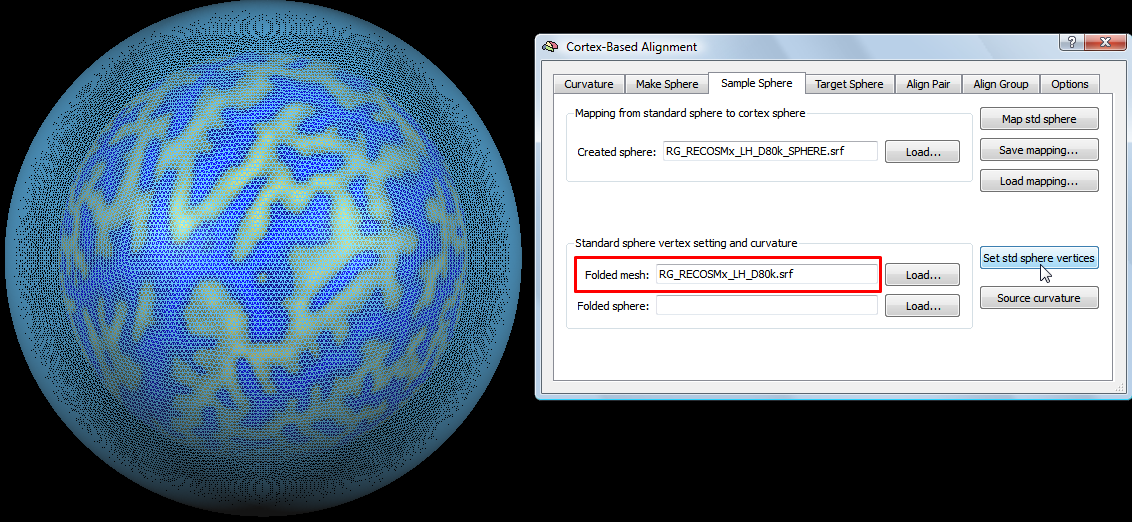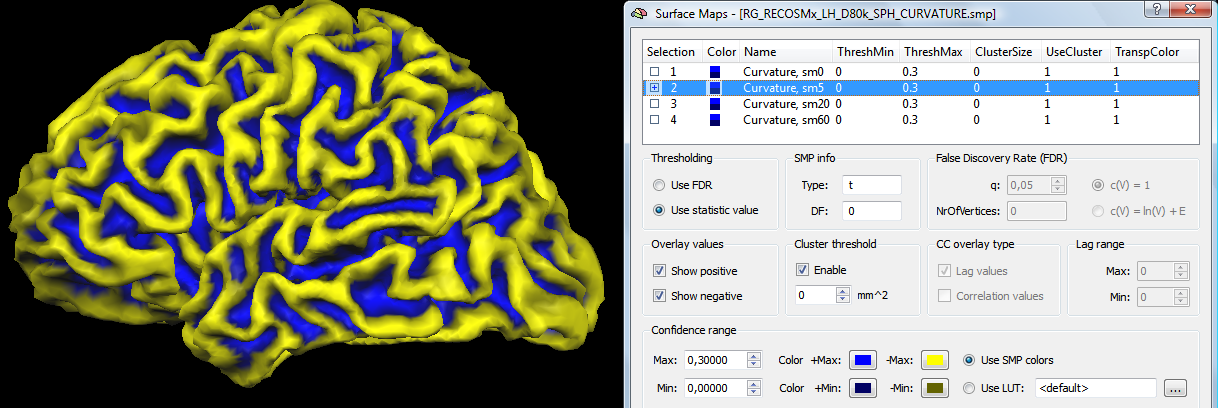BrainVoyager QX v2.8
Creating Curvature Maps for Alignment
The created SSM file in the previous step allows to transfer information from the subject's cortex sphere mesh to the standard sphere used during the subsequent alignment process. The relevant information for the used alignment approach is the curvature measured at each vertex because it represents macroanatomical information. Using the SSM table, the curvature information could be directly transferred from the curvature map. The approach in this step is, however, to first transfer the vertex position information resulting in a folded mesh representation of the standard sphere. The resulting "folded sphere" is then used to calculate the curvature information.
When this step is not performed directly after the creation of the SSM file, the appropriate mapping table must first be loaded using the Load Mapping button in the Sample Sphere tab of the Cortex-Based Alignment dialog.

Furthermore, the original folded mesh, which has been morphed to a spherical representation must be provided in the Folded mesh text field in the Standard sphere vertex setting and curvature field. Click the Load button on the right side of the Folded mesh text field and select the respective file ("RG_RECOSMx_LH_D80k.srf" in the example). To set the X/Y/Z coordinates of the standard sphere to those of the corresponding (mapped) vertices of the original folded cortex mesh, click the Set Std Sphere Vertices button.

As a result, a folded mesh appears in the window, which looks like the original folded cortex mesh. Note, however, that this mesh is actually the standard sphere where each vertex has now the coordinates from the mapped vertex of the original mesh. In order to separate the folded standard sphere from the original folded cortex mesh, the name of the folded standard sphere will be identified by the addition of the "_SPH" substring. The folded standard sphere is saved automatically under this name ("RG_RECOSMx_LH_D80k_SPH.srf") in the example) and appears in the Folded sphere text field in the Standard sphere vertex setting and curvature field.
Since the standard sphere is now folded as the original sphere, the curvature can be calculated directly at each vertex. This is performed by clicking the Source Curvature button on the right lower side of the Sample Sphere tab. Since the alignment procedure uses a coarse-to-fine approach, several different curvature maps will be calculated with various levels of smoothing. The resulting SMP file will contain four sub-maps with smoothing levels "0", "5", "20" and "60". The program automatically presents a Save As dialog and recommends to save the surface maps under the name "RG_RECOSMx_LH_D80k_SPH_CURVATURE.smp".

If of interest, one can inspect the created surface maps by opening the Surface Maps dialog, which will show the four sub-maps with different smoothing levels. In the snapshot above, the sub-map with smoothing level 5 is shown.
The produced curvature map file for the standard sphere serves directly as input for the actual alignment procedure. If these files are created for all meshes of the same hemisphere of all subjects participating in a group study, the alignment process can be started.
Copyright © 2014 Rainer Goebel. All rights reserved.